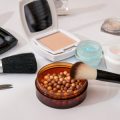Understanding Sensitive Skin and Its Triggers
If you often notice your skin turning red, feeling itchy, or stinging after using certain products, you might have sensitive skin. In the United States, many people experience this, but what exactly does it mean? Let’s break down what sensitive skin really is and why picking the right moisturizer is so important.
What Is Sensitive Skin?
Sensitive skin isn’t a medical diagnosis, but rather a term for skin that reacts easily to environmental factors or skincare products. People with sensitive skin might notice:
- Redness
- Tingling or burning sensation
- Tightness or dryness
- Visible flaking or bumps
Common Triggers in American Environments
Everyday life in the U.S. can expose your skin to many triggers. Here’s a quick look at some of the most common causes of sensitive skin flare-ups:
| Trigger | Example in Daily Life |
|---|---|
| Weather Changes | Hot summers, cold winters, low humidity from indoor heating/AC |
| Air Pollution | City smog, car exhaust, wildfire smoke (common on the West Coast) |
| Chemicals & Fragrances | Perfumed lotions, household cleaners, laundry detergents |
| Hard Water | High mineral content in tap water can dry out skin in many U.S. regions |
| Harsh Skincare Ingredients | Sulfates, alcohol-based toners, strong exfoliants like scrubs and peels |
| Stress & Diet | Lack of sleep, processed foods, high sugar intake |
Why Choosing the Right Moisturizer Matters
A soothing moisturizer acts as a shield for your skin. For Americans dealing with everything from dry winters in Minnesota to humid summers in Florida, finding the right formula is key. The best moisturizers for sensitive skin help by:
- Calming irritation and redness with gentle ingredients like colloidal oatmeal or aloe vera
- Restoring moisture without clogging pores or causing breakouts—important if you live somewhere hot and humid like Texas or Louisiana
- Avoiding potential irritants such as added fragrances, dyes, and harsh preservatives commonly found in mainstream products sold across U.S. drugstores and supermarkets
- Creates a protective layer on the skin
- Attracts moisture and keeps skin hydrated
- Helps relieve itchiness and discomfort
- Reinforce the skin’s natural protective barrier
- Seal in moisture and prevent water loss
- Reduce sensitivity and dryness
- Draws in moisture for lasting hydration
- Soothes dry patches instantly
- Lightweight texture ideal for layering under sunscreen or makeup
- Look for products labeled “fragrance-free” or “hypoallergenic” to avoid extra irritation.
- Avoid alcohol-based formulas—they can be drying.
- The simpler the ingredient list, the better for easily upset skin.
- If you’re unsure about an ingredient, patch test before using all over your face.
- Ceramides: Restore the skin barrier and lock in moisture without irritation.
- Hyaluronic Acid: Hydrates deeply while feeling weightless on the skin.
- Squalane: Lightweight and non-comedogenic—great for sensitive skin that needs extra softness.
- Colloidal Oatmeal: Soothes redness and itching instantly.
- Aloe Vera & Panthenol: Calm and cool stressed-out skin.
- No Fragrance or Alcohol: Avoid these as they can trigger sensitivity flare-ups.
- Patch Test First: Always test new products on a small area before applying them all over your face.
- Simpler Is Better: Fewer ingredients usually mean less risk of irritation.
- Look for “Dermatologist-Tested” Labels: These moisturizers have been evaluated for safety on sensitive skin by professionals.
- Avoid Trendy Additives: Skip essential oils and heavy fragrances—even if they sound nice!
- Ceramides: Strengthen the skin barrier and lock in moisture.
- Hyaluronic Acid: Attracts water to hydrate without heaviness.
- Colloidal Oatmeal & Allantoin: Calm irritation and relieve itchiness.
- Squalane & Sweet Almond Oil: Nourish while being non-comedogenic (won’t clog pores).
- No Fragrances/Dyes: Most dermatologist-favorites skip harsh additives to prevent flare-ups.
- Select a moisturizer that matches your skin type—if you’re oily but sensitive, gel formulas like Aveeno Calm + Restore work best. For dry or eczema-prone skin, richer creams such as Vanicream or First Aid Beauty can provide extra comfort.
- If you’re trying a new product for the first time, always patch test on a small area to make sure there’s no reaction before applying all over your face.
- Patch Test: Always test new products on a small area before applying them to your entire face to avoid unexpected reactions.
- Avoid Friction: Use fingertips instead of cotton pads to minimize abrasion on delicate skin.
- Simplify Your Routine: Stick to minimal, gentle products—over-layering can overwhelm sensitive skin.
- Check Ingredient Lists: Look for moisturizers labeled “hypoallergenic” and free from alcohol, artificial dyes, and fragrances.
- Over-cleansing: Washing your face more than twice a day can strip away protective oils.
- Hot water: Showering or washing with very hot water can weaken your skin barrier.
- Aggressive rubbing: Rubbing with towels or harsh washcloths increases irritation—pat dry instead.
- Layering too many products: More isn’t always better; multiple actives can overwhelm sensitive skin.
- Skipping patch tests: Always test new products on a small area before using them all over your face.
- Avoid products labeled “fragranced,” “perfumed,” or “scented.” Choose “fragrance-free” instead.
- Look for short ingredient lists—fewer ingredients mean fewer chances of irritation.
- Phrases like “hypoallergenic,” “for sensitive skin,” or “dermatologist-tested” are good signs—but still check the label!
2. Key Calming Ingredients Dermatologists Recommend
If you have sensitive skin, you know that choosing the right moisturizer can make all the difference. According to U.S. dermatologists, certain ingredients are especially effective at soothing irritation and strengthening your skin’s barrier. Let’s break down some of these superstar components and find out how they help calm sensitive skin.
Colloidal Oatmeal
Colloidal oatmeal is a favorite among dermatologists for its natural soothing powers. It’s finely ground oats suspended in liquid, which helps it lock onto your skin and deliver moisture where it’s needed most. Colloidal oatmeal reduces redness, itching, and inflammation—making it a go-to for people with eczema or generally reactive skin.
How It Works:
Ceramides
Ceramides are lipids (fats) naturally found in your skin. When your skin barrier is compromised—often the case with sensitive skin—it loses ceramides, which can lead to dryness and irritation. Adding them back with a good moisturizer helps repair and strengthen the barrier, making your skin less reactive over time.
How They Help:
Glycerin
This classic hydrator is a dermatologist staple because it pulls water from the air into your skin—a process called “humectancy.” Glycerin is gentle, non-irritating, and safe even for very sensitive complexions. It leaves your skin soft without feeling greasy or heavy.
Main Benefits:
Other Soothing Ingredients to Look For
Ingredient Main Benefit Aloe Vera Cools and calms irritated skin, reduces redness Squalane Mimics natural oils, deeply moisturizes without clogging pores Allantoin Promotes healing and soothes roughness or flakiness Shea Butter Nourishes dry areas and offers rich hydration for extra-sensitive types Pantothenic Acid (Vitamin B5) Boosts moisture levels and supports healing of minor irritations Dermatologist Tips for Picking a Sensitive Skin Moisturizer
This ingredient breakdown can help you decode product labels and find the best soothing moisturizer for your sensitive skin—just like dermatologists do!

3. How to Choose the Right Moisturizer for Your Skin Type
If you have sensitive skin, picking the right soothing moisturizer can feel overwhelming. The good news? There’s a perfect product out there for everyone—you just need to understand your skin’s unique needs. Here’s how you can easily identify your skin type and choose a dermatologist-approved moisturizer that will keep your complexion calm, comfortable, and hydrated.
Identifying Your Skin Type
The first step is figuring out whether your skin is dry, oily, or combination. Here are some quick tips:
Skin Type Common Signs What to Look For in a Moisturizer Dry Flaky patches, tightness, dullness Creams with ceramides, hyaluronic acid, squalane, and glycerin for deep hydration Oily Shiny T-zone, visible pores, prone to breakouts Oil-free gels or lightweight lotions with niacinamide or aloe vera; non-comedogenic formulas Combination Oily in some areas (usually T-zone), dry or normal elsewhere Balancing lotions with gentle hydrators like panthenol or allantoin; avoid heavy oils on the T-zone Sensitive (all types) Redness, burning, stinging, reacts easily to products Fragrance-free, minimal-ingredient formulas; look for calming ingredients like colloidal oatmeal or centella asiatica Key Ingredients Dermatologists Recommend for Sensitive Skin
Tips from American Dermatologists:
Your Personalized Routine: Putting It All Together
If you’re still unsure which moisturizer fits your needs, remember: it’s totally normal to try a couple of options before finding the best match. Listen to your skin, start slow with new products, and focus on gentle formulas recommended by board-certified dermatologists. With a little trial and error—and the right guidance—you’ll discover the soothing moisturizer that keeps your sensitive skin happy year-round.
4. Dermatologist-Approved Soothing Moisturizer Picks
If you’re searching for the perfect moisturizer for sensitive skin, you don’t have to look far. Dermatologists in the U.S. often recommend specific formulas that are gentle, effective, and free from common irritants. Here’s a curated list of top picks available at American drugstores and beauty retailers—covering both budget-friendly and luxury options.
Top Moisturizers Recommended by Dermatologists
Product Name Main Soothing Ingredients Best For Price Range Where to Buy Cetaphil Moisturizing Cream Glycerin, Sweet Almond Oil, Vitamin E Dry & Sensitive Skin $10-$16 Walmart, Target, Amazon CeraVe Moisturizing Cream Ceramides, Hyaluronic Acid, Niacinamide Very Dry & Compromised Skin Barrier $14-$20 CVS, Walgreens, Ulta Beauty La Roche-Posay Toleriane Double Repair Face Moisturizer Ceramide-3, Niacinamide, Glycerin, Prebiotic Thermal Water Redness-Prone & Reactive Skin $20-$25 Target, Ulta Beauty, Amazon Vanicream Moisturizing Cream Petrolatum, Glycerin, Sorbitol (Free of Fragrance & Dyes) Eczema-Prone & Allergy-Sensitive Skin $12-$17 Walmart, CVS, Amazon First Aid Beauty Ultra Repair Cream Colloidal Oatmeal, Shea Butter, Allantoin, Ceramides Irritated or Flaky Skin Needing Extra Comfort $16-$38 (sizes vary) Sephora, Ulta Beauty, Amazon Aveeno Calm + Restore Oat Gel Moisturizer Pantheol (Pro-Vitamin B5), Feverfew Extract, Oat Kernel Flour Sensitive/Oily or Combination Skin Types $15-$19 Target, Walgreens, Walmart Kiehl’s Ultra Facial Cream (Luxury Pick) Squalane, Glacial Glycoprotein Extract, Glycerin All Skin Types Wanting Lightweight Hydration $24-$68 (sizes vary) Kiehl’s Stores, Sephora, Nordstrom How These Ingredients Help Sensitive Skin?
Your Next Steps for Calmer Skin:
Troubleshooting Tip:
If you experience stinging or redness after applying a product labeled “for sensitive skin,” check the ingredient list for hidden irritants like essential oils or alcohol. Even well-known brands sometimes include these! When in doubt, stick with dermatologist-approved basics.
5. Application Tips for Maximum Comfort
To get the most out of your soothing moisturizer, especially if you have sensitive skin, how and when you apply it matters just as much as what’s inside the bottle. Dermatologists recommend specific steps to help you maximize comfort and minimize irritation. Here are some best practices to follow:
Best Practices for Applying Moisturizer to Sensitive Skin
Step What To Do Why It Matters Cleansing First Wash your face with a gentle, fragrance-free cleanser and pat dry with a soft towel. Prepares skin to absorb moisturizer and avoids trapping dirt or irritants. Timing Apply moisturizer within 1-2 minutes after cleansing while your skin is still slightly damp. Helps lock in moisture and enhances absorption for better hydration. Amount Use a nickel-sized amount for your face. Adjust as needed for neck or body. Avoids overloading skin (which can cause breakouts) and ensures even coverage. Application Technique Gently press or pat moisturizer into the skin instead of rubbing vigorously. Reduces risk of redness, irritation, and micro-tears on sensitive skin. Layering with Other Products If using serums or treatments, apply those first, then moisturizer, then sunscreen (AM routine). Keeps active ingredients close to the skin and seals them in without clogging pores. Sunscreen Last (Daytime) Always make sunscreen your final step in the morning routine. Protects sensitive skin from UV damage without diluting SPF effectiveness. Additional Tips from Dermatologists
Your Sensitive Skin Routine at a Glance:
Morning (AM) Evening (PM) 1. Gentle Cleanser
2. Treatment/Serum (if needed)
3. Soothing Moisturizer
4. Sunscreen (SPF 30+)1. Gentle Cleanser
2. Treatment/Serum (if needed)
3. Soothing MoisturizerBy following these dermatologist-approved tips, you’ll help keep your sensitive skin comfortable, hydrated, and protected throughout the day.
6. What to Avoid: Ingredients and Habits That Can Irritate Sensitive Skin
If you have sensitive skin, picking the right moisturizer isn’t just about what to use—it’s also about what to avoid. Some common ingredients and daily habits can trigger redness, stinging, or flare-ups, even in products that seem gentle at first glance. Here’s what dermatologists say you should skip to keep your skin calm and happy.
Ingredients That Commonly Irritate Sensitive Skin
Ingredient Why It Can Irritate Common Sources Fragrance (Parfum) Can cause allergic reactions and irritation Moisturizers, lotions, creams Alcohol (Denatured, SD Alcohol) Dries out the skin barrier and increases sensitivity Toners, gels, some lightweight lotions Essential Oils (Lavender, Citrus, etc.) Natural but often irritating for sensitive types “Clean” beauty products, organic moisturizers Sulfates (Sodium Lauryl Sulfate) Strips natural oils and disrupts skin barrier Cleansers, face washes, shampoos Dyes/Colorants Add unnecessary chemicals that can trigger sensitivity Colored creams and lotions Preservatives (Methylisothiazolinone) Linked to contact dermatitis in sensitive users Wet wipes, moisturizers with water content Exfoliating Acids (AHA/BHA) Might be too harsh for extra-sensitive skin if used daily Chemical exfoliants, certain anti-aging creams Retinoids/Retinol Can cause peeling and redness; best avoided unless recommended by your dermatologist Anti-aging products, acne treatments Habits That Might Trigger Sensitive Skin Flares
Your Go-To Checklist for Sensitive Skin Care Shopping:
The Takeaway: Less Is More for Sensitive Skin!
The bottom line is simple: when shopping for soothing moisturizers, remember that avoiding harsh ingredients and changing a few daily habits can make a huge difference in keeping your sensitive skin happy. Stick to gentle formulas, patch test new products, and always listen to your skin’s signals!


